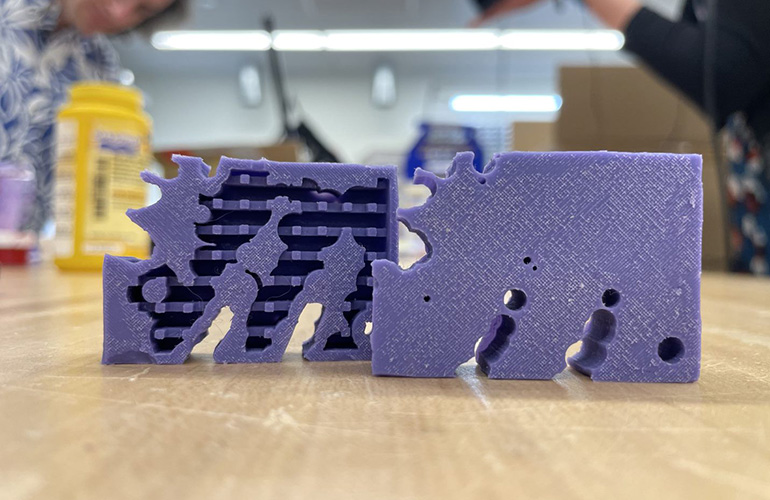|
Listen to this article  |
A team led by Northwestern University researchers has developed an AI that can design unique robots from scratch. The team gave the AI a simple prompt, to design a robot that can walk across a flat surface, and used the AI’s design as blueprints to test its effectiveness.
This AI program is also different from others because it can run on a lightweight personal computer, instead of the supercomputers that use lots of energy and large datasets to work. The program created by the research team is also able to generate new ideas, unlike other models that mimic humans’ past work.
“We discovered a very fast AI-driven design algorithm that bypasses the traffic jams of evolution, without falling back on the bias of human designers,” Northwestern’s Sam Kriegman, who led the work, said. “We told the AI that we wanted a robot that could walk across land. Then we simply pressed a button and presto! It generated a blueprint for a robot in the blink of an eye that looks nothing like any animal that has ever walked the earth. I call this process ‘instant evolution.’”
Kriegman is an assistant professor of computer science, mechanical engineering, and chemical and biological engineering at Northwestern’s McCormick School of Engineering. He worked with David Matthews, a scientist in Kriegman’s lab and the first author on the paper. They also worked with co-authors Andrew Spielberg and Daniela Rus from MIT, and Josh Bonard from the University of Vermont for several years before the latest discovery.
Going from a prompt to a new robot in just seconds
The AI program can start with any prompt, but the team started by asking it to design a physical machine capable of walking on land. After this prompt, the researchers didn’t give any more input to the AI.
The AI program designed a robot about the size of a bar of soap. In its first iteration, the robot could jiggle but was unable to walk. Next, the AI evaluated its design and, upon determining it hadn’t met its goal of designing a robot that could walk, iterated a new design. The program continued iterating new designs and evaluating their effectiveness, unit it eventually created a robot that could balance in place, then one that could hop forward, and then shuffle forward.
After just nine tries, the AI created a robot that could walk half its body length per second, about half the speed of an average human stride. Altogether, this took the program just 26 seconds on a laptop.
The AI program could have designed any kind of walking robot it wanted, but it came to the same conclusion that evolution did, which was designing legs. This is where the algorithm stops pulling from nature in its design, however.
“It’s interesting because we didn’t tell the AI that a robot should have legs,” Kriegman said. “It rediscovered that legs are a good way to move around on land. Legged locomotion is, in fact, the most efficient form of terrestrial movement.”
This robot has three uneven legs, fins along its back, a flat face, and is riddled with holes. To test the simulated robot’s capabilities, the team used the AI design as a blueprint for a real robot.
Testing a robot designed by AI

The inside of the robot contains “air muscles.” | Source: Northwestern University
The team 3D printed a mold of the negative space around the robot’s body and filled the mold with liquid silicone rubber. After curing for a couple of hours, the silicone was squishy and flexible.
To make it move, the researchers filled the rubber robot body with air, making its three legs expand. When the air deflated from the robot’s body, the legs contracted. By continually pumping air into the robot, it repeatedly expanded and contracted, resulting in slow and steady locomotion.
Kreigman and his team aren’t entirely sure why the design includes holes throughout the robot’s body. The best they can tell, the holes remove weight and add flexibility, allowing the robot to bend its legs for walking.
“We don’t really know what these holes do, but we know that they are important,” Kreigman said. “Because when we take them away, the robot either can’t walk anymore or can’t walk as well.”
The team has high hopes for the different types of robots that the AI could design in the future, with the right prompts.
“When humans design robots, we tend to design them to look like familiar objects,” Kriegman said. “But AI can create new possibilities and new paths forward that humans have never even considered. It could help us think and dream differently. And this might help us solve some of the most difficult problems we face.”
Credit: Source link


Comments are closed.